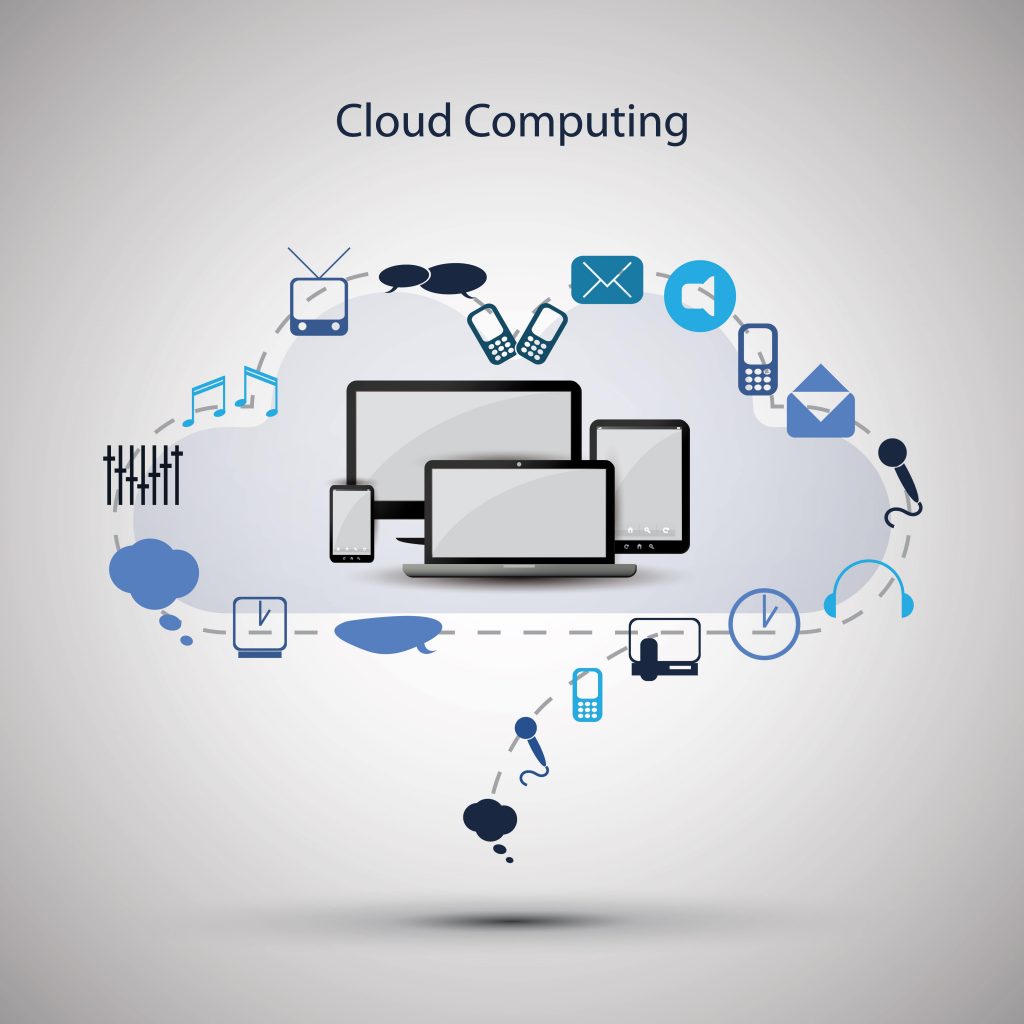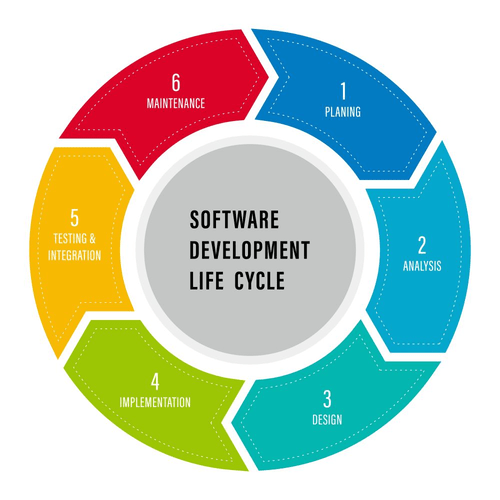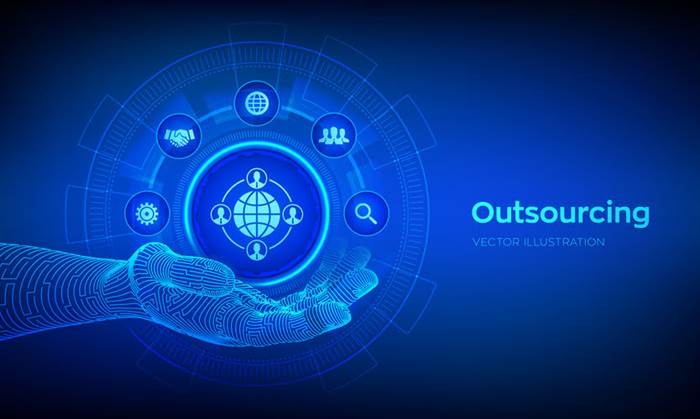Different Types Of Cloud Computing Service Models Leave a comment
Содержание
PaaS also provides scalability but here users have to configure the scaling parameter depending upon the demand. Integration with other infrastructure components such as web services, databases, and LDAP. Discover the latest expert-compiled thinking and industry insights about cloud computing. Make the best use of Kubernetes across clouds with enterprise-grade security, reliability and resiliency. With thousands of partners worldwide, we are positioned to help customers scale their business, drive innovation and transform their customer experience.
- The cloud providers host and manage the application, addressing software upgrades and security patching as needed.
- The idea of accessing computing resources from somewhere other than an on-premise IT infrastructure (the sky?) sounded like science fiction.
- Software as a Service is a software distribution model in which applications are hosted by a vendor or service provider and made available to customers over a network, typically the Internet.
- VMware Cross-Cloud™ services enable organizations to unlock the potential of multi-cloud with enterprise security and resiliency.
While multi-cloud accelerates digital transformation, it also introduces complexity and risk. Cloud Computing is a process of delivering/enabling scalable, expandable and almost perfectly elastic software services using internet technologies. It is a method of delivering Software as a Service , delivered in a pay-per-use basis. It provides self service capabilities to users with scalable features to increase usage on requirement.
Communications As A Service Caas
The idea of accessing computing resources from somewhere other than an on-premise IT infrastructure (the sky?) sounded like science fiction. The reality was much more profound and forever changed technology and how we conduct business. Serverless is a cloud-native development model that allows developers to build and run applications without having to manage servers. Salesforce, for example, is a well-known cloud application that you can use for customer relationship management, instead of setting up your own system on your own servers. If you’re interested in cloud applications, you may want to integrate one into your own architecture to support your teams, or develop your own cloud app for internal or customer use. IaaS customers pay on a per-user basis, typically by the hour, week, or month.
A Beginner’s Guide to Cloud Computing – Baseline
A Beginner’s Guide to Cloud Computing.
Posted: Fri, 16 Sep 2022 21:25:11 GMT [source]
Currently, although a few major players lead the market, none of them holds a market lock in terms of technology standards and features. There is still room for new emerging companies to make their mark in the cloud computing space. Today’s businesses are moving more and more of their data and applications to the cloud. A recent report forecasted that, by 2020,83 percent of enterprise workloadswill be in the cloud. This trend isn’t entirely surprising given the many benefits that cloud services provide, including enhanced scalability and accessibility as well as cost reductions.
Q: What Kind Of Services And Applications Are Considered Cloud Services?
Since cloud computing is elastic by default, organizations can scale resources on demand. Cloud applications can automatically shrink and grow their infrastructure resources in response to spikes of traffic. PaaS leverages IaaS to automatically allocate the resources needed to power a language-based tech stack. Popular language tech stacks are Ruby On Rails, Java Spring MVC, MEAN, and JAM stacks. PaaS customers can then simply upload an artifact of their application code that is automatically deployed to the infrastructure of the PaaS. This is a novel and powerful workflow that allows teams to focus completely on their specific business application code and not worry about hosting and infrastructure concerns.
Plus, private clouds can have a higher level of security and privacy because they are housed on private networks not accessible to public traffic. Infrastructure-as-a-Service means a provider manages the infrastructure for you—the actual servers, network, virtualization, and storage—via a public cloud or private cloud. You access the infrastructure through an API or dashboard, and the infrastructure is rented.

With PaaS, developers can choose the features and cloud services they want on a subscription or pay-per-use basis. It provides a platform for its users or customers to develop, compute, run and deploy the code or entire application as functions. It allows the user to entirely develop the code and update it at any time without worrying about the maintenance of the underlying infrastructure. Use cloud computing resources located in the on-site data center or hosted by the third-party cloud service provider. Avail cloud resources and services, such as hardware, software, virtual machines, infrastructure, storage, and security which are controlled and operated by the cloud service provider.
Vmware Cloud Disaster Recovery
Increase app velocity and centrally manage, secure, connect, and govern your clusters no matter where they reside. Unlock value by modernizing your existing apps and building innovative new products. Infrastructure as a Service , Platform as a Service and Software as a Service are often called the computing stack because of how they work together. Do not want the responsibility of maintaining infrastructure, platforms, and software.

Operationalize consistent security and networking across apps, users, and entities with transparency built into our tools. Build, run, secure, and manage all of your apps across any cloud with application modernization solutions and guidance from VMware. Modernize apps faster with a multi-cloud Kubernetes platform to help you build and run all apps consistently across clouds. Operate apps and infrastructure consistently, with unified governance and visibility into performance and costs across clouds. VMware Cross-Cloud™ services enable organizations to unlock the potential of multi-cloud with enterprise security and resiliency. In this free online course from openSAP, you’ll learn all about hybrid cloud landscapes, including best practices for integration, security, and operations.
Run enterprise apps at scale with a consistent cloud infrastructure across public clouds, data centers and edge environments. Infrastructure-as-a-service lets companies “rent” computing resources, such as servers, networks, storage, and operating systems, on a pay-per-use basis. The infrastructure scales – and customers don’t have to invest in the hardware. With IaaS, rather than managing physical servers and other infrastructure on-site, you access it over the internet. Typically, the CSP manages the infrastructure while the user manages the operating systems, middleware and applications. With IaaS, you have more control over your IT resources and enhanced flexibility.
Data
Some providers also charge customers based on the amount of virtual machine space they use. Highly available resources are provisioned and orchestrated based on the needs and policies of the organization. Cut IT hassles by outsourcing IT to the public cloud provider’s specialists. Modernize existing applications and build cloud-native applications, so you can release software hundreds of times every day. Deploy applications anywhere and migrate with ease from the data center to the edge to any cloud.
Major cloud computing providers have globally distributed hardware locations that ensure high performance connections depending upon the physical connection location. Additionally, cloud providers offer global content delivery networks that cache user requests and content by location. Users can access the newest machines with extreme, multi-core CPUs designed for heavy parallel processing tasks.
Trust & Security
Plus, explore next steps and strategies for starting your own hybrid cloud transformation journey. Consolidated Technologies, Inc. offers a comprehensive set of IT services for businesses of various sizes. With an experienced staff and detailed design and implementation procedures, CTI has what your business needs to get the most functional solutions available. To date, we’ve helped over 2,000 companies navigate the continuously-developing technological world, and we can help your business too. Physical hardware location is a significant concern when delivering the optimal end-user experience.
Computing resources in a cloud infrastructure platform are dynamically divided and allocated on demand. Since a cloud host’s physical machines are dynamically provisioned and shared Cloud business solutions between multiple tenants, cloud hardware is thoroughly optimized for maximum usage. When the phrase “the cloud” first began popping up in the early 2000s, it had an esoteric ring.
No matter what you want your cloud application to do, you’ll benefit from familiarizing yourself with the cloud-native approach to application development. In PaaS, users have to pay for the amount based on pay-as-you-go price regardless of how much or less they use. Services and infrastructure are dedicated to one https://globalcloudteam.com/ organization and connectivity is supported over a private network. Unlock the value of any cloud and accelerate modernization of any app to deliver more innovation to your customers, faster. Together with our partners, VMware is building the new multi-cloud ecosystem positioned to become essential to our customers.

Platform as a service is a cloud infrastructure built on IaaS that provides resources to build user-level tools and applications. It provides the underlying infrastructure including compute, network, and storage resources, as well as development tools, database management systems, and middleware. Public clouds deliver computing resources — servers, storage, applications, etc. — over the internet from a cloud service provider, such as AWS and Microsoft Azure. Cloud providers own and operate all hardware, software, and other supporting infrastructure. Infrastructure as a Service is a form of cloud computing that provides virtualized computing resources over the internet. In an IAAS model, a third party provider hosts hardware, software, servers, storage and other infrastructure components on the behalf of its users.
Cloud Computing
Accelerate cloud transformation with an enterprise infrastructure, multi-cloud operations and modern app platform across the edge and any cloud. Deliver security and networking as a built-in distributed service across users, apps, devices, and workloads in any cloud. Introducing any type of new technology comes with risks, but the benefits of the cloud can make the challenges worthwhile. If you take the proper steps and work with the right partners, you can minimize risks and enjoy the benefits cloud-based IT services can provide. The dynamic properties of cloud computing sets the foundation for novel higher-level services. These services can help not only complement, but often provide necessary services for agile and DevOps teams.
Implement Security & Governance Best Practices
Typically IaaS is a service where infrastructure is provided as outsourcing to enterprises such as networking equipment, devices, database, and web servers. IAAS platforms offer highly scalable resources that can be adjusted on-demand which makes it a well-suited for workloads that are temporary, experimental or change unexpectedly. Other characteristics of IAAS environments include the automation of administrative tasks, dynamic scaling, desktop virtualization and policy-based services. Other characteristics of IAAS include the automation of administrative tasks, dynamic scaling, desktop virtualization and policy-based services. Unify operations and security across any cloud and gain better situational intelligence of your entire software stack by leveraging your infrastructure and applications. Usage of the cloud is expanding among all sorts of businesses due to the many benefits it provides.
Tools
When using an SaaS program, you don’t have to install it on on-premise devices, and you don’t have to manage the underlying infrastructure that enables the program. The CSP handles all of these aspects including app software, hardware, middleware and data. Depending on the service agreement, the CSP may also ensure the security of your app data. SaaS minimizes the upfront costs and deployment time required to start using a new application. Businesses can access a wide range of IT services and applications through the cloud from data backups to communications solutions. Teams that use cloud resources do not have to purchase their own hardware assets.
Most companies now use a mix of the three – and the lines between them can sometimes blur. Because you don’t have as much physical equipment on site, there’s less that might break. Your CSP will have enough redundant equipment to provide continuous service. If a problem does occur with any on-site equipment, you can easily reroute calls to a cell phone or to another office.
Customer does not have clue about any servers which is why they do not need to maintain the server hence it is serverless architecture. Build and deployment tools for rapid application management and deployment. According to a recent survey, the percentage of companies using a public cloud is expected to rise to 51% in 2016. It is estimated that servers shipping to a public cloud will grow at 60% CAGR , while on-site server spending will be reduced by 8.6% over the next two years. Read more about some of the core cloud computing benefits for your business. With connected security that delivers full visibility and frictionless operations, your apps and data are more secure with VMware, in any environment.
